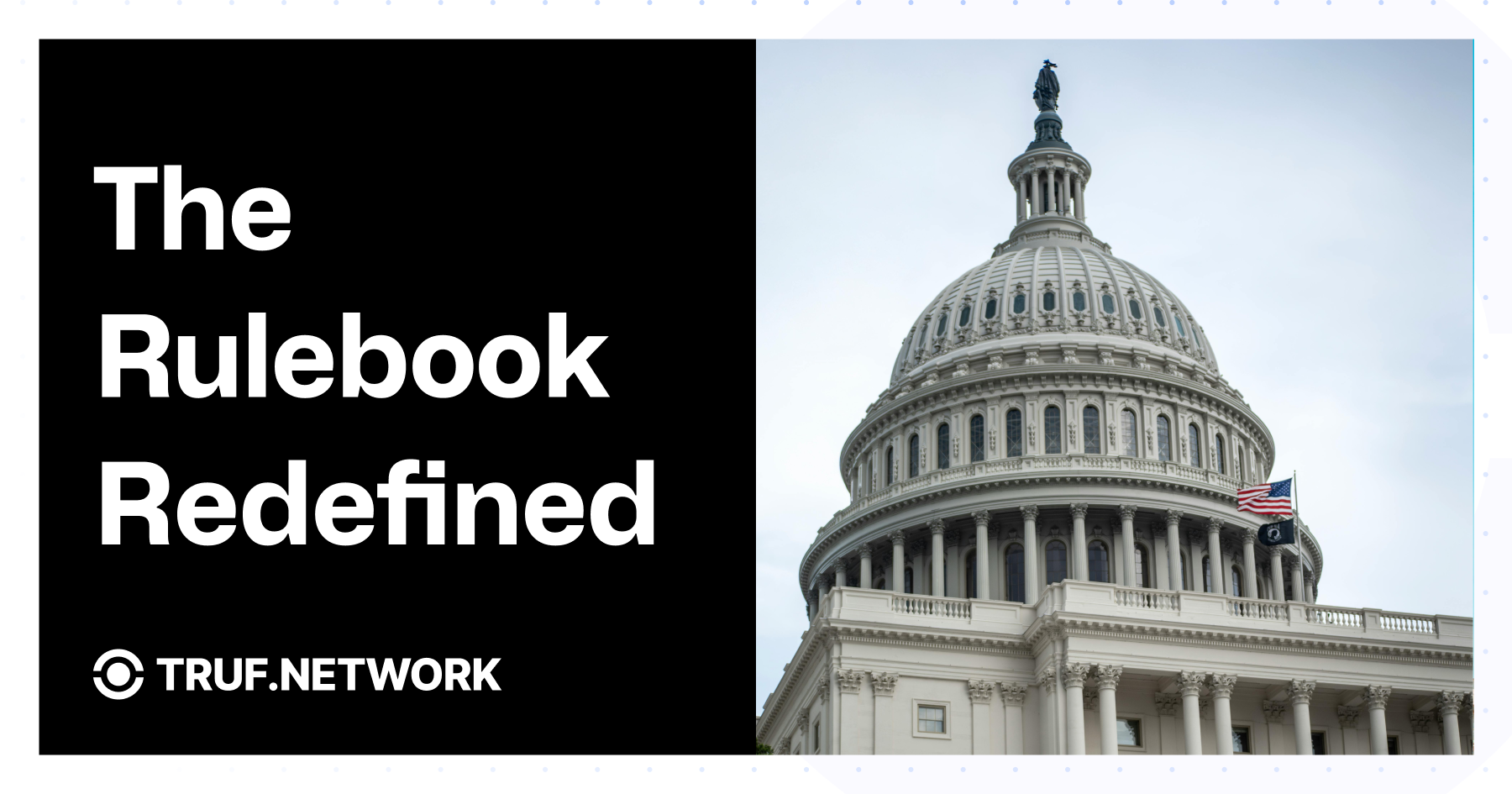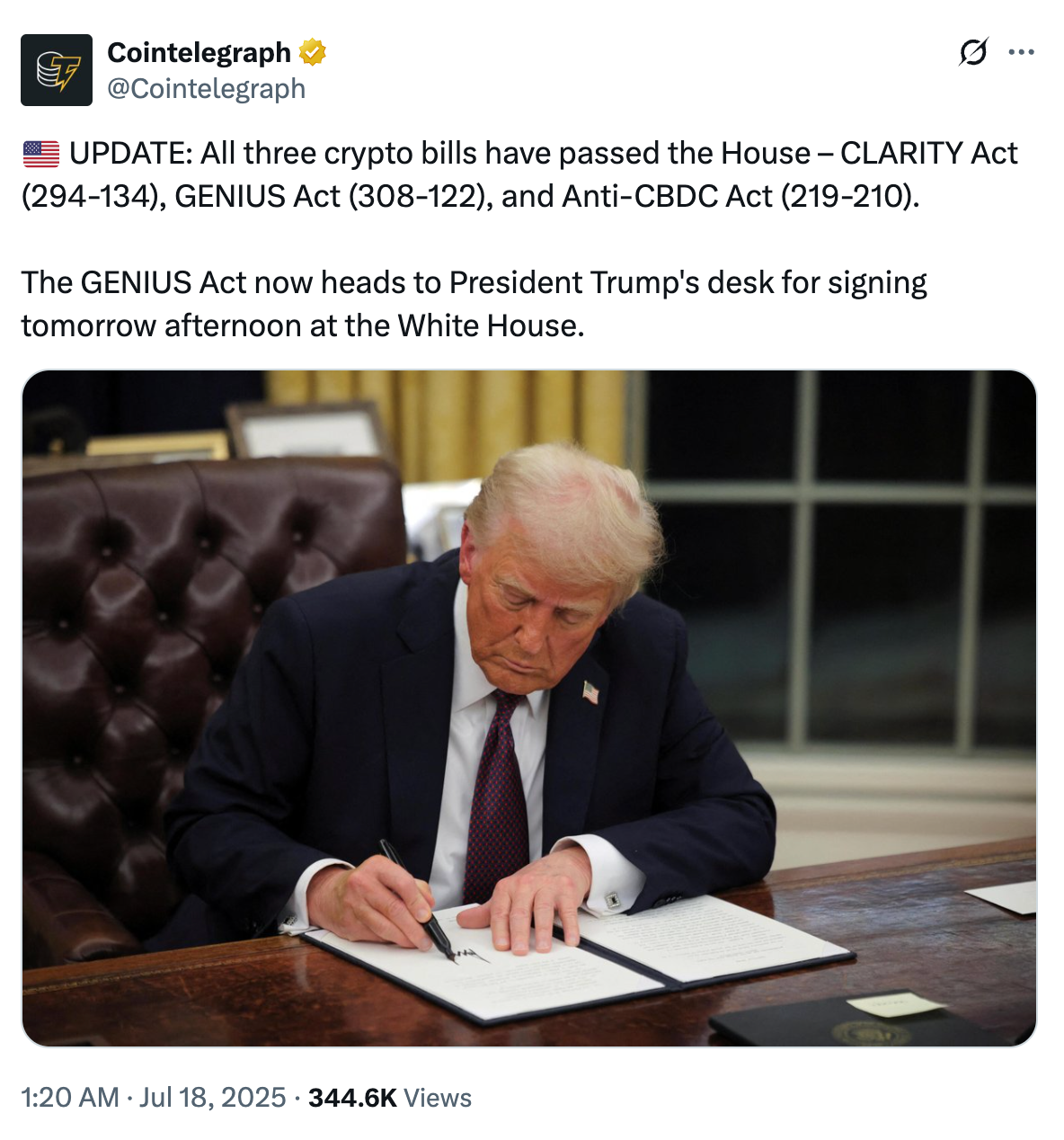America’s Crypto Trilogy: GENIUS, CLARITY, and the Anti‑CBDC Act
Three new U.S. laws rewrite crypto’s rulebook - giving developers, DeFi builders, and investors the regulatory clarity to launch, scale, and innovate.

The United States has passed three landmark crypto bills: the GENIUS Act, the CLARITY Act, and the Anti‑CBDC Act. Together, they establish a regulatory framework designed to integrate digital assets, stablecoins, and decentralized finance into the financial system.
This marks a decisive shift in how crypto is governed, creating the conditions for builders and investors to develop at scale.
GENIUS Act: A Regulatory Framework for Stablecoins
The GENIUS Act introduces strict oversight for USD-pegged stablecoins. Key requirements include:
- 💵 Full reserve backing with cash or U.S. Treasuries
- 📊 Mandatory monthly audits and public disclosures
- 🏦 Redemption rights for token holders
- 👮♀️ Dual regulatory oversight from federal and state agencies
This gives developers, payment providers, and fintech startups a clear path to integrate stablecoins as compliant money rails.

CLARITY Act: Defining Digital Assets for Developers
The CLARITY Act resolves long-standing confusion over digital asset classifications. It assigns oversight as follows:
- 🏷️ Commodities go to the CFTC
- 📑 Securities to the SEC
- 💱 Stablecoins under the GENIUS framework
This classification system gives blockchain developers and investors certainty about compliance requirements when launching new tokens or DeFi platforms.
Anti‑CBDC Act: Private Stablecoins, Not Government Digital Dollars
The Anti‑CBDC Act prohibits the Federal Reserve from issuing a retail Central Bank Digital Currency. Instead, the focus shifts to private-sector stablecoins regulated under GENIUS.
For crypto builders and DeFi projects, this preserves an innovation-friendly environment where decentralized apps (dApps) can thrive without the threat of centralized, state-controlled rails.

Why This Matters for Developers and Builders
For years, blockchain startups have faced a legal swamp. Now there’s a clear path forward for:
- Building DeFi protocols that rely on compliant stablecoins
- Launching cross-border payment apps with regulatory certainty
- Designing embedded finance tools for global markets
As Tory Green, co-founder of io.net, explains:
“The immediate benefit is certainty. For years, stablecoin issuers and blockchain innovators have operated in a regulatory gray zone… The GENIUS Act provides clear guardrails for dollar-backed stablecoins - the lifeblood of crypto’s $160B payments ecosystem - without drowning innovators in broader complexities.”
This clarity means developers can now build at scale, knowing their products align with U.S. law.
TRUF.NETWORK: Powering Verified Data for Regulated DeFi
With regulation mandating transparency, real-time, multi-source data feeds become essential for compliance. TRUF.NETWORK offers:
- 📊 Live reserve attestations for stablecoin issuers
- 🔗 Multi-source price feeds for DeFi collateral management
- 📈 Macro data indexes to support predictive analytics and risk models
Builders leveraging TRUF.NETWORK gain access to a trusted data layer that satisfies both user demands and regulator scrutiny.
As crypto enters its institutional era, TRUF provides the critical infrastructure for developers to innovate with confidence.
The Next Wave: A Builder-Ready Crypto Economy
The GENIUS, CLARITY, and Anti‑CBDC Acts establish a foundation for a compliant, high-liquidity, innovation-friendly crypto economy.
For developers, the terrain is mapped. For TRUF.NETWORK, the demand for verified, real-time data has never been higher.
The rules are written. The rails are built. Will you build it with us?
